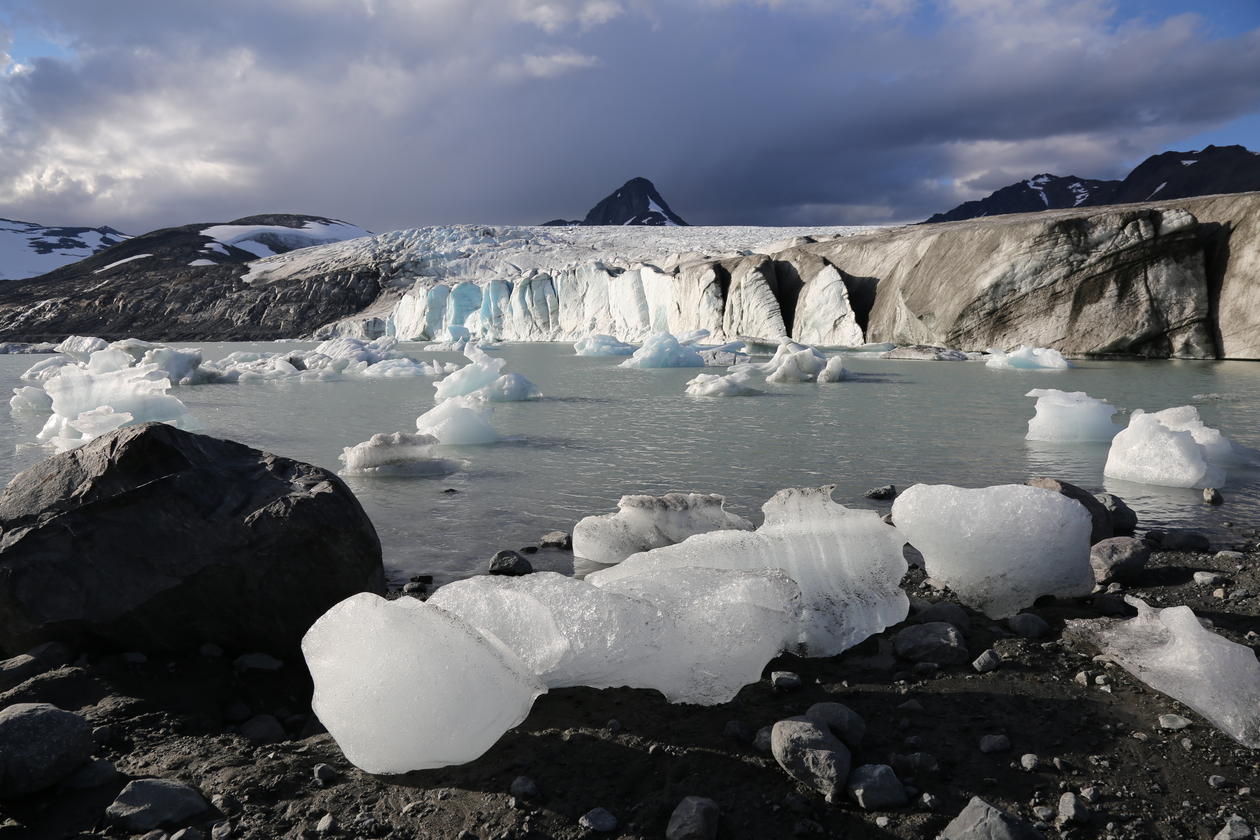Holocene glacier and climate variability at Sulitjelmaisen, northern Norway and Sweden
For my master project I reconstructed the last 11,500 years worth of glacier and climate changes at a glacier complex called Sulitjelmaisen in the subarctic, focusing on the largest glacier called Salajekna.

Hovedinnhold
The Sulitjelmaisen complex is almost 70 km north of the arctic circle and contains the largest glaciers in Sweden.
I first related a lake sediment record of glacier activity with geomorphological evidence of former glacier equilibrium line altitudes (ELAs). I then applied this to a theoretical relationship between glacier ELAs and climate to reconstruct continuous Holocene winter precipitation for the southern part of the Sulitjelma massif.
It is important to understand how glaciers and climate have varied in the past when contextualising modern climate change and making predictions of future change.
Entertaining fieldwork challenges
I was fortunate enough to visit subarctic Norway three times on fieldwork for the project: twice in winter to get sediment cores from lake ice, and once in the summer to map the field area.
Each trip presented a lot of unique and entertaining challenges like the snowmobiles getting stuck in slush on the lake ice; battling strong winds and waves while transporting the equipment to and from the field site with a small boat; and heavy snow cover well into the summer.
Studying in Bergen has been a fantastic opportunity
I really appreciated that the course has a strong emphasis on developing your independent research skills, with a 60-ECTS thesis that allows you to delve very deeply into a topic of interest. The geography department has a very friendly atmosphere, thanks to its relatively small size and open-door policy.
A healthy work-life balance is encouraged, and it's very easy to achieve since the mountains are right on the doorstep. There's nowhere else I'd rather have studied!



